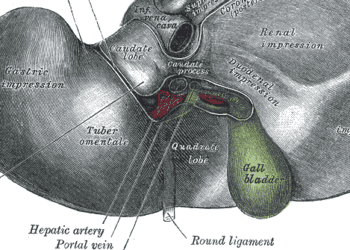Wellness Check: Exercise
Lifestyle interventions improve several markers in metabolic associated fatty liver disease
1. In this systematic review and meta-analysis, a low carbohydrate diet, aerobic training, and resistance training significantly improved multiple markers in metabolic associated fatty liver disease (MAFLD).
2. Although both aerobic and resistance training were effective interventions in MAFLD, resistance training was more effective in reducing certain metabolic markers.
Evidence Rating Level: 1 (Excellent)
Metabolic associated fatty liver disease (MAFLD) is a form of liver disease that is often treated with lifestyle interventions, such as diet and exercise. However, the efficacy of these interventions is poorly understood, and no systematic review to date has evaluated the impact of lifestyle changes on MAFLD. As a result, the objective of the present study was to synthesize the evidence on the impact of lifestyle interventions on various metabolic indicators in MAFLD.
Of 8469 identified records, 34 (n=2652 patients, 8% had diabetes) studies were included from various databases from inception to May 2021. Studies were included if they were published in English and evaluated the effects of lifestyle interventions on MAFLD. Studies were excluded if participants had non-alcoholic fatty liver disease (NAFLD) unrelated to metabolic dysfunction. The review was performed using PRISMA guidelines. Quality assessment was performed using the Joanna Briggs Institute Critical Appraisal tools for RCTs. Statistical analysis was performed using fixed-effects models and random-effects models. The primary outcome was changes in hepatic fat content and blood markers associated with metabolic risk.
The results demonstrated that a low carbohydrate diet, aerobic exercise, and resistance training were effective in improving hepatic fat content and multiple blood markers related to MAFLD, including plasma triglycerides, high-density lipoprotein, and HbA1c. Furthermore, resistance training was more effective than aerobic exercise at improving hepatic fat content and plasma triglycerides. Despite these results, the majority of included studies focused on patients with obesity, and there were insufficient studies to support the influence of lifestyle interventions on lean or normal weight individuals with MAFLD. Nonetheless, the present study was the first review to examine the influence of lifestyle interventions on patients with MAFLD.
Low-risk lifestyle behaviors significantly reduce the risk of incident type 2 diabetes
1. In this systematic review and meta-analysis, maximum adherence to the combination of five low-risk lifestyle behaviors (LRLBs) was associated with an 85% lower risk of type 2 diabetes (T2DM).
2. In addition, when comparing those who had the highest adherence versus those with the lowest adherence to these behaviors, the difference in risk was up to 80%.
Evidence Rating Level: 1 (Excellent)
Lifestyle modifications with the incorporation of low-risk lifestyle behaviors (LRLBs), including exercising, eating a healthy diet, and reducing substance use, have been a mainstay for type 2 diabetes (T2DM) management. Currently, no review has synthesized the cumulative effect of these behaviors on incident T2DM. As a result, the objective of the present systematic review and meta-analysis was to evaluate the association between adherence to LRLBs and incident T2DM.
Of 6987 identified records, 19 (n=1,693,753 participants, median age 54) studies were included from various databases from inception to September 2022. Studies were included if they were prospective cohort studies evaluating the effect of LRLBs on incident T2DM with a minimum of 1-year follow-up. Clinical trials and cohort studies that did not report diet and/or combined lifestyle behaviors were excluded. The review was performed using PRISMA guidelines. Study quality was assessed using Grading of Recommendations, Assessment, Development, and Evaluations (GRADE). The risk of bias was assessed using a funnel plot and Egger and Begg tests. The primary outcome was incident T2DM.
The results demonstrated that patients who exhibited maximum adherence to five LRLBs, including maintaining a healthy body weight, healthy diet, regular exercise, smoking cessation/abstinence, and light alcohol consumption, had 85% protection against incident T2DM. In addition, those who adhered to the maximum combination of LRLB’s had up to an 80% difference in incidence compared to those who adhered to 0-3 LRLBs. Despite this, the review was limited by the heterogeneity of the included studies, which may have affected the results. Nonetheless, the present study presented strong evidence that adherence to multiple LRLBs may significantly reduce the risk of incident T2DM.
Resistance training is effective in improving markers of disease in type 2 diabetes
1. In this systematic review and meta-analysis, resistance training in patients with type 2 diabetes mellitus (T2DM) led to significant improvements in biochemical and clinical markers of disease, including fasting blood glucose, blood pressure, and fat mass.
2. In addition, the effect of high-intensity resistance training was superior to medium-low intensity training for improving several biochemical and clinical markers in patients with T2DM.
Evidence Rating Level: 1 (Excellent)
It has been well established that exercise plays an important non-pharmacological role in the treatment regimen of patients with type 2 diabetes (T2DM). Although resistance training plays a crucial role, previous studies have not defined the ideal training intensity that confers this benefit. As a result, the objective of the present systematic review and meta-analysis was to understand how exercise intensity may influence clinical and biochemical markers in T2DM.
Of 19,812 identified records, 40 (n=1,491 participants) studies were included from various databases from database inception to April 2022. Randomized controlled trials were included if patients were ≥17 years old, had T2DM, compared resistance training to either no exercise or only stretching, and evaluated biochemical and clinical markers of T2DM. Studies were excluded if the intervention period was <4 weeks and if patients did not have T2DM. The review was performed using PRISMA guidelines. The risk of bias was assessed using the Risk of Bias 2 tool (RoB2). Statistical analysis was performed using fixed or random effects models. The primary outcome was the effect of resistance training on clinical and biochemical markers in T2DM.
The results demonstrated that resistance training significantly lowered biochemical markers (e.g., HBA1c and fasting blood glucose) and clinical markers of T2DM, such as systolic blood pressure and fat mass. In addition, the effect of a high-intensity resistance training intervention was superior to a medium-low intensity for a number of biochemical and clinical markers. Despite these results, the review was limited by the heterogeneity of the included studies which may have influenced the magnitude of the effect sizes. Nonetheless, the present study added significant evidence to suggest that high-intensity resistance training should play a greater role in the treatment plan of patients with T2DM.
A combination of exercise and cognitive training may improve working memory in older adults
1. In this systematic review and meta-analysis, the combination of exercise and cognitive training (CECT) was superior to no intervention in improving working memory in older adults.
2. However, when comparing CECT to either exercise or a cognitive intervention alone, there was no significant improvement in working memory.
Evidence Rating Level: 1 (Excellent)
Decreased working memory is an important marker of cognitive aging. Known to be a main marker of cognitive aging. Several studies have suggested that physical exercise and cognitive training may benefit memory overall. In fact, previous research has explored the combination of cognitive training and exercise training (CECT), but the outcome measures were on either overall cognition or executive functioning. As a result, the objective of the present study was to synthesize the evidence on whether CECT can slow down the decline of working memory in older adults
Of 1,379 identified records, 21 (mean age range 65.8-79.2 years) studies were included from various databases from inception to April 2021. Studies were included if they evaluated working memory in patients ≥ 60 years old who were either healthy or who had mild cognitive impairment or dementia, and who underwent cognitive and/or exercise training. Studies were excluded if they did not compare the combined intervention with a control group or either intervention alone. The review was performed using PRISMA guidelines. Statistical analysis was performed using Egger’s regression intercepts, funnel charts, and fixed effects models. The risk of bias was assessed using the PEDro scale. The primary outcome was working memory.
The results demonstrated that CECT had a significant benefit on working memory in the elderly compared to no intervention. This effect may be influenced by both the frequency of the intervention and the patient’s cognitive state. However, the effects of CECT were not significantly different from either intervention alone. Despite these results, the study was limited by the lack of post-intervention follow-up, so the lasting effects of the intervention on working memory cannot be elucidated. Nonetheless, the present study provided early evidence suggesting the utility of CECT in improving working memory in older adults.
Image: PD
©2023 2 Minute Medicine, Inc. All rights reserved. No works may be reproduced without expressed written consent from 2 Minute Medicine, Inc. Inquire about licensing here. No article should be construed as medical advice and is not intended as such by the authors or by 2 Minute Medicine, Inc.







